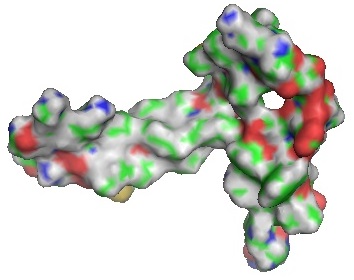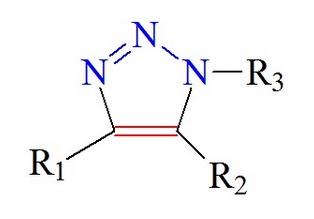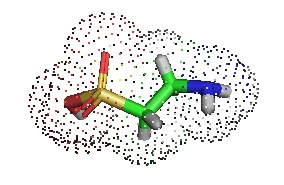|
|
|
Bio-Synthesis Newsletter - December 2018
|
BNAs in RNAi
 BNA analogs are useful tools for gene silencing when using RNAi. Many chemically modified siRNAs have been investigated, among them were bridged nucleic acids such as 2’,4’-methylene bridged nucleic acid 2’,4’-BNAs, also known as locked nucleic acid or LNA. Some of these modified siRNAs showed promising effects. For example, Rahman et al. found that the introduction of 2’,4’-BNA modifications at 3’-overhangs in the sense and antisense strands of the siRNA (siBNA1 and 2) completely retained the natural RNAi property of natural RNA. BNA analogs are useful tools for gene silencing when using RNAi. Many chemically modified siRNAs have been investigated, among them were bridged nucleic acids such as 2’,4’-methylene bridged nucleic acid 2’,4’-BNAs, also known as locked nucleic acid or LNA. Some of these modified siRNAs showed promising effects. For example, Rahman et al. found that the introduction of 2’,4’-BNA modifications at 3’-overhangs in the sense and antisense strands of the siRNA (siBNA1 and 2) completely retained the natural RNAi property of natural RNA.
|
|
Read More
|
|
|
Mosaic mutations found in Alzheimer’s patients
 Alzheimer’s currently afflicts more than 20 million people worldwide. However, recently, several reports have shown that individual neurons of the human brain can display somatic genomic mosaicism. Bushman et al., in 2015, reported that Alzheimer’s disease neurons show increases in DNA content and amyloid precursor protein (APP) gene copy numbers. The study revealed the existence of a phenomenon called somatic recombination in the brain. Somatic recombination increases the diversity of proteins encoded by a given gene through DNA-shuffling mechanisms. However, the precise physiological function of APP is presently not known, and more molecular studies are needed to solve the nature of this mechanism to gain answers that allow the development of therapies for Alzheimer’s disease. Alzheimer’s currently afflicts more than 20 million people worldwide. However, recently, several reports have shown that individual neurons of the human brain can display somatic genomic mosaicism. Bushman et al., in 2015, reported that Alzheimer’s disease neurons show increases in DNA content and amyloid precursor protein (APP) gene copy numbers. The study revealed the existence of a phenomenon called somatic recombination in the brain. Somatic recombination increases the diversity of proteins encoded by a given gene through DNA-shuffling mechanisms. However, the precise physiological function of APP is presently not known, and more molecular studies are needed to solve the nature of this mechanism to gain answers that allow the development of therapies for Alzheimer’s disease.
|
|
Read More
|
|
|
Detection of DNA synthesis with click chemistry
 The incorporation of EdU or 5-ethynyl-2′-deoxyuridine enables sensitive detection of DNA synthesis in cells using “click chemistry." In 2008, Salic and Mitchinson showed that an EdU based method allows fast and sensitive detection of DNA synthesis in vivo. No sample fixation or DNA denaturation was required, and biological structures were preserved as well. The technic works in cultured cells, the intestine, and brain of whole animals in which the cells incorporate 5-ethynyl-2'-deoxyuridine (EdU) into replicating DNA. After incorporation, the terminal alkyne group is available for the reaction with organic azides using Cu(I)-catalyzed click reactions. The incorporation of EdU or 5-ethynyl-2′-deoxyuridine enables sensitive detection of DNA synthesis in cells using “click chemistry." In 2008, Salic and Mitchinson showed that an EdU based method allows fast and sensitive detection of DNA synthesis in vivo. No sample fixation or DNA denaturation was required, and biological structures were preserved as well. The technic works in cultured cells, the intestine, and brain of whole animals in which the cells incorporate 5-ethynyl-2'-deoxyuridine (EdU) into replicating DNA. After incorporation, the terminal alkyne group is available for the reaction with organic azides using Cu(I)-catalyzed click reactions.
|
|
Read More
|
|
|
Risk Assesment of Amino Acid Supplements
 The amino acids taurine, glutamine, and arginine have become increasingly popular as ingredients in dietary supplements, functional food, and beverages. These three amino acids are the most widely used and studied amino acids. Shao and Hathcock in 2007 published a paper in which the researchers review the lowest adverse effects (LOAEL) as well as no adverse effects (LOAEL) in humans. The report states that supplement intakes of up to 3 g/day for taurine, 14 g/day for glutamine, and up to 20 g/ day for arginine is the observed safe level (OSL). However, the intake of even higher levels of these amino acids appears to have no apparent adverse effects in humans. The standard amino acid analysis is the method of choice for the accurate quantitation of amino acids in amino acid-based formulations. The amino acids taurine, glutamine, and arginine have become increasingly popular as ingredients in dietary supplements, functional food, and beverages. These three amino acids are the most widely used and studied amino acids. Shao and Hathcock in 2007 published a paper in which the researchers review the lowest adverse effects (LOAEL) as well as no adverse effects (LOAEL) in humans. The report states that supplement intakes of up to 3 g/day for taurine, 14 g/day for glutamine, and up to 20 g/ day for arginine is the observed safe level (OSL). However, the intake of even higher levels of these amino acids appears to have no apparent adverse effects in humans. The standard amino acid analysis is the method of choice for the accurate quantitation of amino acids in amino acid-based formulations.
|
|
Read More
|
|
|
|
|
Bio-Synthesis, Inc.
800 Mario Court, Lewisville, TX 75057, USA
Toll Free: 800.227.0627 | 1.972.420.8505 (Intl.)
|
|
|
|
|
|